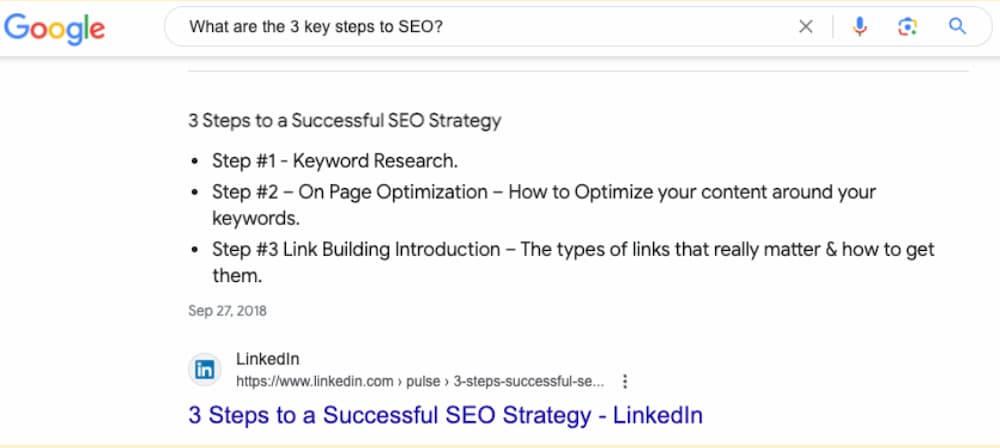Ever notice how the first page of a Google search is full of popular brands and web pages – regardless of the niche of the question asked? Users gravitate to information from recognizable sources, typically without further investigating its merit or truthfulness. This is referred to as familiarity bias and impacts the SEO strategies of all online businesses.
Familiarity bias in SERPs affects how often users click on links. Established brands or websites tend to get more clicks, while newer or less-known ones need help to compete.
However, understanding familiarity bias can also be a powerful tool in SEO strategies. It presents opportunities to leverage user preferences to enhance visibility and engagement. By employing targeted optimization techniques and crafting compelling content, you can mitigate the impact of familiarity bias and ensure your website stands out. We will review how Google reacts to familiarity bias, its partnership with Reddit, and SEO strategies you can employ to make the most out of familiarity bias.
Familiarity Bias and Its Impact on Customer Engagement
Behavioral scientist Jason Hreha describes familiarity bias as a phenomenon where people prefer what they already know, even if there are better options. This bias, also called cognitive ease, is the comfort or ease people feel when processing familiar information. Essentially, when something feels familiar, it feels easier to understand and, therefore, more appealing.
While familiarity itself isn’t a bias, it can cause biases like the mere exposure effect, where people choose things simply because they’re familiar. This can lead to missed opportunities for discovering new information or better solutions.

Is Familiarity A Cognitive Bias?
Novin and Meyers researched bias within search engine results pages (SERPs) and how the presentation of sources significantly influences users’ judgments of usefulness. They found that cognitive biases shape users’ perceptions and interactions with the SERP. There are four cognitive biases that users go through when navigating search results – Priming, Anchoring, Framing, and the Availability Heuristic.
The Priming Effect
The Priming effect primes users’ attention towards certain information. You can see this in when you begin typing your query into the search bar and auto-suggestions appear. For instance, if you’re looking for information about a health condition, these suggestions direct your attention to specific aspects of the condition (like symptoms or treatments). While this information is important, these suggestions might overlook other relevant information.
Anchoring Biases
Anchoring biases keep a user’s focus on the first result encountered. Typically found in transactional queries, search engines list items with their pricing information. Say you’re looking for a new laptop and the first one you see is priced at $1000. Users will use this initial cost as the benchmark for similar items and question the quality of lower-priced items or the reliability of higher-priced items.
Framing
Framing effects influence users’ choices based on how information is presented. This can be seen in research on (potentially) controversial topics where search results emphasize an existing perception of the issue. For example, if you’re looking information about climate change, the first few results focus on the potential negative impacts of climate change. Alternatively, the results may focus solely on how climate change is not a pressing concern.
Availability Heuristic
The Availability Heuristic prompts reliance on easily accessible information. Imagine you’re looking into the safety of flying after hearing about a plane crash on the news. Because you can easily remember the crash (easily accessible), you might think plane crashes happen more often than they actually do. Even though statistics prove flying is one of the safest ways to travel, the plane crash is dominant in the news and recently updated information, making it dominant in search engines (and your mind).
What is the bias of search engines?
There is a renewed spotlight on Google’s ranking system and concerns over instances where Google’s algorithms prioritized well-known entities, arguably at the expense of content quality and smaller entities. Google consistently denies these claims, emphasizing its commitment to delivering relevant and authoritative content to users regardless of brand size or notoriety. It maintains its dedication to algorithmic fairness and the impartial treatment of all web pages. These algorithms spark debate about algorithmic (and familiarity) biases that influence search rankings and raise questions about the balance between user preferences and content quality.
How Do Featured Snippets Impact Familiarity Bias?
Users have increasingly turned to online forums to avoid search engine algorithmic biases. Reddit is among the most popular forums for user-generated content, opinions, information and recommendations. On February 22, 2024, Reddit and Google announced a new partnership where Google will integrate Reddit’s structured content into its search results. This partnership will allow search users to find varied content, mitigating the impact of familiarity bias.
Structured Reddit content, known for its organized format and community-driven discussions, provides valuable insights spanning diverse topics, such as product recommendations and travel advice. With real-time access to this structured data, Google can improve search relevance and present information more effectively, meeting users’ expectations for direct answers and personalized content.
Google will use Reddit content as featured snippets and direct answers to enhance the search experience and foster greater user engagement with its search-generative experience. Featured snippets provide users with concise information at the top of the SERP. Studies have shown that featured snippets attract more attention than regular search results, underscoring their potential to positively influence user perceptions and interactions.
In the past, there was a trade-off between convenient access to information and the accuracy of this information. By incorporating Reddit content, Google aims to enhance the accuracy and depth of featured snippets – offering an inclusive view of topics and reducing the reliance on familiar sources. Google’s collaboration with Reddit improves search result quality and underscores the significance of Google’s Navboost algorithm to refine user experiences.

Is Google A Biased Search Engine?
According to Pandu Nayak, who testified at the U.S. vs. Google antitrust trial, Navboost is one of Google’s core ranking algorithms. It focuses on multiple signals to assess webpage rankings, including
- the content of the document,
- its topicality,
- page quality,
- reliability,
- and localization.
This data is used to cater search results to user preferences and behaviors. Navboost is described as a memorization system that relies heavily on user data from the previous 13 months to train its machine learning systems. By memorizing user preferences and behavior, Navboost can narrow the 33B+ search documents into a more manageable list and optimize the relevance based on past user interactions.
However, this algorithmic breakdown of search results feeds into the argument about familiarity bias (and cognitive bias). It raises questions about the balance between catering to user preferences and ensuring the diversity and quality of content presented in SERPs. While Google’s algorithms aim to prioritize relevance and user satisfaction, the challenge lies in mitigating biases and optimizing search rankings to provide fair and objective results that reflect the vast amount of reliable information on the web.
How Do You Overcome Familiarity Bias?
While familiarity bias can be a hurdle to overcome when trying to rank your content, you can use it to boost your visibility. We’ve compiled five simple steps to help you use familiarity bias in your favor instead of a marketing hurdle.
Identify Trending Topics
Begin by researching trending topics and keywords within your industry or niche. Utilize tools like Google Trends or social media analytics to identify subjects that are currently popular among your target audience. To identify trending subjects that are generating buzz among your target audience, look at metrics such as
- search volume,
- social media shares,
- comments,
- And patterns or spikes in activity.
Develop blog posts, articles, or videos that address these trending topics and provide valuable insights or solutions to users. Be sure to include multimedia aspects (like images, videos, or infographics) to enhance user engagement and make your content more shareable on social media platforms.
Example
Imagine running a fitness website and using Google Trends to discover trending topics. You see that “HIIT workouts” and “Plant-based diets” are trending topics in the health and wellness space. Create a guide with tips and tricks for HIIT exercises for beginners. Include success stories from individuals who have incorporated HIIT into their fitness routines. You can even include notes about the side effects beginners will experience that often cause them to quit or question the effectiveness of these workouts. You want to address the full scope of your content, positive and negative, to become the go-to comprehensive guide.
Optimize for Featured Snippets
Featured snippets are concise answers that appear at the top of search engine results pages (SERPs), providing users with immediate information without the need to click through to a website. While featured snippets may reduce your click-through rate (CTR) initially, they increase your visibility and your site’s expertise, authority, and trustworthiness in Google’s eye.
- Use lists, tables, or Q&A formats to organize your information logically and concisely.
- Answer the questions directly and avoid unnecessary fluff.
- Incorporate relevant keywords and phrases naturally throughout your content.
- Use the target query in headings, subheadings, and throughout the body of your text.
Example
Let’s say that you’re running a fitness blog where the most common questions you receive are “How to lose belly fat,” “Best exercises for building muscle,” or “Healthy meal prep ideas.” Create a step-by-step guide with actionable tips (like incorporating cardio exercises, reducing calorie intake, and staying hydrated) for losing belly fat or a list of muscle-building exercises. Be sure to use your FAQs (like “healthy meal prep ideas”) throughout your content to attract users looking for this specific information.
Integrate Familiar Branding Elements
- Use your logo prominently in the header or top corner of each page.
- Incorporate your brand colors into your website’s color scheme for backgrounds, buttons, and text.
- Use familiar design patterns and navigation structures to enhance usability and familiarity for users.
- Be sure to feature your branding elements within your content, images, videos, and other graphics.
- Keep important information and calls-to-action easily displayed and recognizable on each page to guide users toward desired actions (like buy now, subscribe, learn more).

Consistent branding enhances the user experience and encourages repeat visits, ultimately boosting engagement and retention.
Example
Imagine that you run a coffee shop called “Brew & Bean.” Your brand identity might include a logo featuring a coffee cup and bean icon, with warm and inviting colors like brown and cream. Use the brown color from the logo for headings and accents throughout the site. Subconsciously, users will associate these themes with your brand and products over time on and offline.
Leverage Social Proof
People rely on the actions and opinions of others to guide their own decisions. Encourage customers to share their experiences on social media by creating a branded hashtag. You can also ask satisfied customers to leave reviews or testimonials about their experience with your product or service. You can do this by sending confirmation emails and attaching a simple form or template to make the process easier.
By showcasing positive and negative reviews, testimonials, or user-generated content, you can leverage social proof to build credibility and trust with users.
If your business has received industry awards, certifications, or accolades, prominently display them on your website. This could include badges or logos from recognized organizations or publications.
Example
Let’s say that you operate a travel agency. An effective way to earn social proof would be to encourage your customers to share photos of their vacations using a specific hashtag like #AdventureWith[YourBrand]. Display these user-generated posts on your website or social media channels to showcase real-life experiences and build trust with potential customers.
Personalize User Experience
Implement tracking tools like Google Analytics or heatmaps to collect user behavior data, including visited pages, time spent on site, and interactions with different elements.
You want to specifically track
- which pages users visit most frequently,
- how long they spend on each page,
- and which products or services they show interest in.
Implement dynamic content modules on your website or marketing channels to deliver real-time personalized recommendations. These modules can adapt and change based on user interactions and preferences.
Example
Imagine a scenario where a visitor explores items like outdoor gear. A dynamic content module would analyze this behavior and automatically update the recommendations on the homepage or product suggestion areas to highlight more outdoor gear or similar products. This tailored approach provides users with content aligned with their preferences and past interactions.
My Website Spot - Your Ally Turning Familiarity Bias into A Successful SEO Strategy
Overcoming familiarity bias requires a nuanced understanding of user behavior and search engine dynamics. At My Website Spot, we recognize that familiarity bias presents both challenges and opportunities for businesses seeking to improve their online presence. With over 18 years of expertise in navigating Google’s ranking system, My Website Spot has consistently helped businesses from various industries achieve and maintain top-ranking positions.
Our tailored SEO strategies are designed to maximize your customer reach by leveraging insights into user behavior and search engine algorithms. Reach out to My Website Spot for your SEO needs and gain a strategic ally dedicated to overcoming familiarity bias and driving tangible results for your business.



